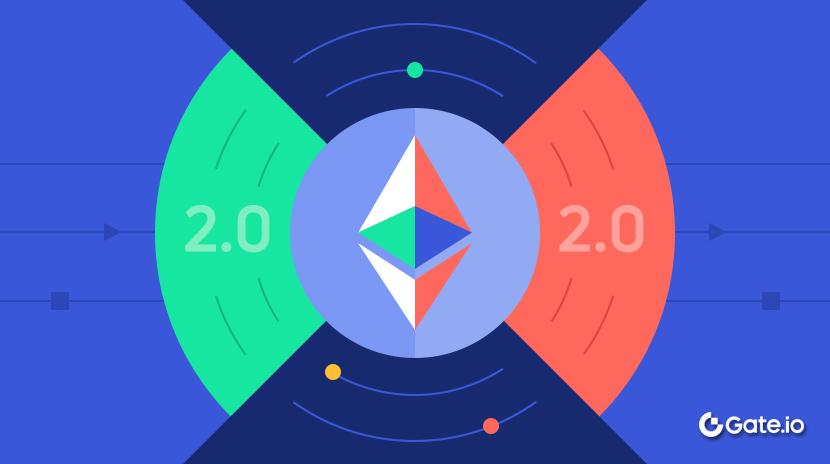Why Your Coin Isn’t Pumping
Everyone in crypto is staring at the same headlines:
- ETFs are live
- Real businesses are integrating stablecoins
- Regulators are friendlier
It’s everything we said we wanted.
So why the hell are prices down?
Why is Bitcoin round-tripping its gains while U.S. equities are up +15–20% on the year? Why are your favorite alt-coins still underwater, even after “crypto isn’t a scam anymore” became a mainstream take?
Let’s talk about it.
Adoption ≠ Number Go Up
Crypto Twitter has this baked-in assumption:
“Once institutions come, once we get regulatory clarity, once JPM launches a token… it’s over, we moon.”
Well, they came. We got the headlines. And yet, here we are.
There’s really one question in investing:
Is it already priced in?
That’s always the hardest thing to know. But market behavior is telling us something uncomfortable:
We got everything we asked for — and it didn’t move prices.
Could markets be inefficient? Sure.
Why? Because most of crypto was wildly disconnected from reality.
$1.5 Trillion For… What, Exactly?
Let’s zoom out.
- Bitcoin is in a class of its own - the perfect meme, like gold. It’s ~$1.9T vs. gold at ~$29T. Less than 10% of gold’s market cap. There’s a clean hedge + option value argument there.
- Ethereum + Ripple + Solana + everything else add another ~$1.5T sitting on far shakier narratives.
No one serious really disputes the potential of the technology anymore. Very few people still argue the whole thing is a scam. That phase is over.
But potential doesn’t answer the real question:
Is this whole industry really worth a few trillion with maybe ~40 million active users?
Meanwhile OpenAI is rumored to IPO near $1T with ~20x more users than the entire crypto ecosystem.
Sit with that for a second.
Moments like this force the real question:
What’s actually the best way to get crypto exposure from here?
Historically: infra. Early ETH, early SOL, early DeFi.
That trade worked.
Today? Most of that stuff is priced like we’re guaranteed 100x usage and 100x fees. Priced to perfection. No margin of safety.
The Market Isn’t Dumb, Just Greedy
This cycle gave us all the headlines.. But a few truths became clear:
- The market doesn’t care about your story - it cares about the gap between price and fundamentals.
Leave that gap wide long enough and the market eventually stops giving you the benefit of the doubt. Especially when you start showing some revenue.
- Crypto isn’t the hottest trade anymore. AI is.
Flows chase momentum. That’s just how modern markets work. Right now, AI is the main character. Crypto is not.
- Businesses follow business logic, not ideology.
Stripe launching Tempo is a warning shot. Maybe, just maybe, corporates won’t use public infra just because they heard on Bankless that Ethereum is the world’s supercomputer. They’ll go wherever it makes the most sense for them.
So I’m not shocked your bags aren’t pumping just because Larry Fink discovered crypto isn’t a scam.
When things are priced to perfection, it takes one mouse fart from Powell or one weird squint from Jensen Huang to nuke the thesis.
Quick Math: ETH, SOL, and Why “Revenue” ≠ Earnings
Let’s do some rough math on the big L1s.
First, staking (not earnings):
- Solana:
~419M SOL staked × ~6% ≈ 25M SOL/year
At ~$140 → ~$3.5B/year in “rewards”
- Ethereum:
~33.8M ETH staked × ~4% ≈ 1.35M ETH/year
At ~$3,100 → ~$4.2B/year in “rewards”
Some people point to staking and say:
“Look, stakers get paid! That’s value capture!”
No. Staking rewards are not value capture.
They’re emissions, dilution, and cost of security, not earnings.
True economic value = fees + tips + MEV paid by users. That’s the closest thing to “revenue” a blockchain has.
On that front:
- Ethereum generated ~$2.7B in transaction fees in 2024, leading all chains.
- Solana has been leading in network revenue recently, pulling in hundreds of millions per quarter.
So, ballpark for where things stand today.:
- Ethereum is doing $1–2B/year in fee + MEV “revenue” on a ~$400B market cap. That’s 200–400x P/S on what is basically cycle-peak casino revenue.
- Solana is doing $1B+ annualized revenue on a ~$75–80B market cap. Call it ~20–60x P/S, depending on how generous your annualization is (and please don’t pick the peak month and run-rate it).
None of this is precise. It doesn’t have to be. We’re not filing with the SEC. We’re just trying to see if we’re in the same galaxy.
And this is before we talk about the real problem:
And the Real Problem: This Isn’t Recurring Revenue
These aren’t stable, enterprise-quality revenue streams.
They’re hyper-cyclical, speculative, re-occurring flows:
- Perps
- Memecoins
- Liquidations
- MEV spikes
- Degenerate churn
In bull markets, fees and MEV explode. In bear markets, they disappear.
That’s not recurring SaaS revenue. That’s Vegas.
You don’t give a Shopify multiple to a business that only makes money when the casino is full every 3–4 years.
Different business. Different multiple.
Return to “Fundamentals”
There is no coherent universe where:
Ethereum at ~$400B+ on maybe $1–2B of highly cyclical fees is a “value” buy.
That’s a ~200-400x P/S with slowing growth and increasing L2s value leakage. ETH isn’t acting like the federal government in a tax system; it’s acting like a federal government that somehow only gets state-level tax revenues while the states (L2s) keep most of the upside.
We’ve memed ETH into the “world computer,” but the cash flow story doesn’t match the sticker price. Ethereum gives me big Cisco energy: early lead, wrong multiple, and an all-time high it may never see again.
Solana, by comparison, looks less insane on a relative basis - not cheap, but less deranged.
It’s doing low-single-digit billions in annualized revenue on a $75–80B market cap — a generous 20–40x P/S.
Still high. Still inflated. But “relatively cheap” vs. ETH.
“Dear LPs, we outperformed ETH — and still lost 80% of the fund.”
Turns out we priced casino flow like recurring software revenue. Thanks for playing.
To put these multiples in perspective:
Nvidia, the most worshipped growth stock on earth, trades at 40–45x earnings (not sales!)- and that’s with:
- real revenue
- real margins
- global enterprise demand
- recurring, contractual sales
- and customers outside of crypto casinos (fun fact: crypto miners were Nvidia’s first real hypergrowth wave)
And again: this is on cyclical casino revenue, not stable, predictable cash flows.
If anything, these chains should trade at a discount multiple - not a premium to tech.
If fees across the industry don’t shift from speculative churn to real, recurring economic value, most valuations will get repriced.
We’re Early… But Not That Kind of Early
There will come a time when prices reconnect with fundamentals. We’re not there yet.
Right now:
- There’s no fundamental reason to pay massive multiples for most tokens.
- Value capture for many networks just isn’t there once you strip out emissions and airdrop farming.
- Most “earnings” are tied to speculative activity on casino-style products.
We’ve built rails that can move money around the world instantly, 24/7, for cheap… and we decided the best use case is slot machines.
Short-term greedy; long-term lazy.
To quote Netflix co-founder Marc Randolph: “Culture isn’t what you say. It’s what you do.”
Don’t lecture me about decentralization when when your flagship product is 10x leverage perpetual on Fartcoin.
We can do better.
That’s the only way we graduate from “over-financialized niche casino” into a real, secular industry.
End of the Beginning
I don’t think this is the end of crypto. But I do think it’s the end of the beginning.
We massively over-invested in infrastructure - well over $100B sunk into chains, bridges, L2s, infra plays - and wildly under-invested in deployment. In products. In actual users.
We keep bragging about:
- TPS
- Blockspace
- Fancy rollup architectures
Users don’t care. They care if:
- it’s cheaper,
- it’s faster,
- it’s easier,
- and it actually solves a problem they have.
Back to cash flow.
Back to unit economics.
Back to basics: who is the user and what problem are we solving?
Where the Real Upside Is
I’ve been giga long crypto for over a decade. That hasn’t changed.
I still believe:
- Stablecoins become the default payment rail.
- Open, neutral infrastructure powers global finance behind the scenes.
- Companies will use this tech because it makes economic sense, not because of ideology.
But I don’t think the biggest winners of the next decade will be today’s L1s or L2s.
Historically, the winners in every tech cycle are at the user aggregation layer, not the infra layer.
The internet made compute/storage cheap. The wealth went to Amazon, Google, Apple - the people who used that cheap infra to serve billions.
Crypto will rhyme with that:
- Blockspace is a commodity.
- Infra upgrades are increasingly marginal.
- Users will always pay for convenience.
- User aggregators will capture most of the value.
The greatest opportunity now is putting this tech inside businesses that already operate at scale. Rip out pre-Internet financial plumbing and replace it with crypto rails where they actually cut costs and improve efficiency - the same way the internet quietly upgraded everything from retail to industrial companies because the economics were too good to ignore.
Everyone adopted the internet and software because it made economic sense. Crypto will be no different.
We can wait another decade for that to happen.
Or we can start doing it now.
Updating Priors
So where does this leave us?
- The tech works.
- The potential is massive.
- We’re still early in real adoption.
It’s going to pay to re-underwrite everything:
- Value networks on real usage and fee quality, not ideology.
- Not all fees are created equal: recurring vs. re-occurring.
- Winners of the last decade won’t dominate the next.
- And stop treating token prices as tech-validation scoreboards.
We’re so early we still act like token prices tell us whether the tech is working. Nobody picks AWS over Azure because Amazon or Microsoft stock is up that week.
We can sit around for another decade waiting for companies to adopt this. Or we can start doing it now.
Bring real GDP on-chain.
Job’s not finished.
Invert.
Disclaimer:
- This article is reprinted from []. All copyrights belong to the original author [Santiago R Santos]. If there are objections to this reprint, please contact the Gate Learn team, and they will handle it promptly.
- Liability Disclaimer: The views and opinions expressed in this article are solely those of the author and do not constitute any investment advice.
- Translations of the article into other languages are done by the Gate Learn team. Unless mentioned, copying, distributing, or plagiarizing the translated articles is prohibited.
Related Articles

The Future of Cross-Chain Bridges: Full-Chain Interoperability Becomes Inevitable, Liquidity Bridges Will Decline

Solana Need L2s And Appchains?

Sui: How are users leveraging its speed, security, & scalability?

Navigating the Zero Knowledge Landscape

What is Tronscan and How Can You Use it in 2025?
